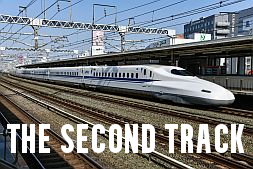Some Thoughts on Gov 2.0 in Australia
Andy Williamson | October 30, 2009
The Director of the UK Hansard Society’s eDemocracy Programme on the progress of Gov 2.0 in Australia.
It was great to attend the recent CeBit Gov2.0 conference in Canberra. Beforehand, I’d got the feeling that Australia was finally starting to limber up and get moving.
Back in the early days of eDemocracy, it’s safe to say that Australia was a leader. The Queensland government was innovative and original and the Federal Government through the National Office of the Information Economy (NOIE) starting doing some good things too.
Then things stalled.
I watched the use of digital media in the 2007 Federal election with interest and was hopeful that this new attitude and approach would translate into government. Unlike the Obama regime’s more overt use of digital media, the Australian approach has been slow and steady but now its clear to see that momentum has been building and a largely positive ‘can do’ attitude is starting to prevail.
It’s difficult to compare though, countries and cultures are not homogenous and each country needs to set its own pace and pick its own path. It’s also easy to criticise governments – any government – for not doing enough, but that ignores the huge cultural issues that have to be overcome within the traditional and monolithic structures of government.
That’s not by way of an apology on behalf of governments, it’s just a fact.
In my eyes, the challenge for digital democracy has always been to marry the conflicting interests of government and citizens. It’s not about ‘doing to’ anymore, it’s ‘doing with’. This has been a challenge for digital democracy advocates too, even successful projects risk being siloed as sitting on one side of the fence or the other.
Gov2.0, the application of Web2.0 technologies and thinking to government, shifts the equation; so the Australian digital renaissance is happening at a time when a can-do culture meets enabling technology. The timing is right to harness social media and open data applications to open up government – and government data – to citizen’s contributions, creation, scrutiny and debate.
The creation of the Gov2.0 Taskforce is a milestone in this thinking but this is only possible because there now exists an understanding and a tacit level support from government. That was why it was so edifying to hear Minister of Finance Lindsay Tanner and Senator Kate Lundy talking ‘on message’ about the role of the citizen, overcoming the traditional risk aversion of governments and the need to open up and leverage government data sets for public good.
Yes, data is a public asset. It always has been but now the excuses for ‘protecting’ it from the public have evaporated.
It’s not going to be plain sailing. Gov2.0 requires a cultural change on the part of all of those involved. With rights come responsibilities and this goes both ways.
Government, and Gov2.0 advocates, cannot and must not ignore broadband as a right for citizens.
Opening up data only to the digital elite is counter-productive and unfair. Every citizen has a right to take part in democracy and so must have a right to an effective broadband connection, the skills to use the tools and the knowledge to know where to find what it is they need. It is relatively early days for Gov2.0 but networks and digital rights appear to lag behind the enthusiasm for open data and participatory uses of social media and this can’t continue.
As I said in Canberra, I am not a consumer of democracy, I am a citizen.
With this comes the right to use my data – the data government collected on my behalf – to improve the world for myself, my neighbours, community, country and planet. After all, it’s my data.
We also have a right to feed into the policy process in a meaningful and timely way and to be heard. And for this to happen on our terms. We have the right to be able to find the information and services we need, when we need them, where we are. The Gov2.0 conference showed us many examples of good emergent thinking around social media, co-creation, open data and sharing but this thinking is still embryonic and is yet to fully permeate the whole of government.
Momentum is building but it’s still the honeymoon period for Gov2.0 and real risks lie ahead.
The early eDemocracy experiences in Australia and the foundering of the world-class Digital Strategy in New Zealand remind us that complacency is a dangerous thing. Yet to meet senior government officials who are strong advocates of what Gov2.0 can do was a healthy sign for a Digital Australia. Along with politicians, these are the people who will enable Gov2.0 to happen.
But they can’t do it alone, to truly engage with citizens it requires both sides to work together, to open up, to share and to collaborate. Citizens must remain at the forefront of Gov2.0, and civil society must continue to develop their response and expectations as to what Gov2.0 means for them alongside the developments inside government.
And government needs to listen.
Dr Andy Williamson is Director of the UK Hansard Society’s eDemocracy Programme and is based in London. He recently visited Canberra to speak at the CeBIT Gov2.0 Conference.
SHARE WITH:







